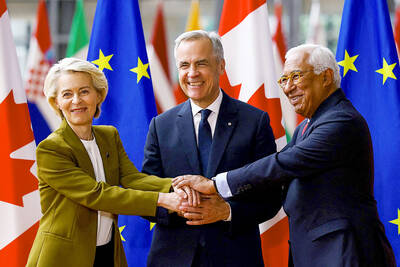A modern version of Noah's Ark, designed to save thousands of creatures from extinction, was launched on Monday by scientists at London's Natural History Museum.
The extraordinary project was set up to protect a vast array of animals, not from epic floods, but from the threat of imminent extinction thanks to humankind's actions. Thousands of species are expected to be wiped out within the next few decades because of pollution, war and the destruction of natural habitats.
Rather than being offered refuge on a giant wooden boat, the threatened species face a more prosaic salvation at the bottom of a deep-freeze unit in one of the museum's laboratories in west London. While entire colonies of some creatures will be frozen, in most cases only DNA and tissue samples of endangered species will be stored.
Scientists behind the project, dubbed the Frozen Ark, are keen to preserve the DNA of endangered animals so they can continue research into their evolutionary histories even if they become extinct. More ambitiously, scientists hope one day to be able to use cells from the frozen tissue samples to recreate extinct animals using advanced cloning techniques.
"Because of man's actions, species are going extinct at an alarming rate. We're losing them now at a rate that's as serious as the great extinctions," said Philip Rainbow, of the Natural History Museum.
"The ultimate desire is that if we keep tissue samples, we can one day implant these into surrogate parents and get them back. It may sound fanciful, but it'd be a great pity if in 40 years' time scientists are saying, 'look what we can do now, why didn't you keep tissue samples of these animals?"' he said.
On Monday, DNA samples from the scimitar-horned oryx, which was declared extinct in the wild last year, became the first to be deposited, along with samples from the Socorro dove, a coral fish called the banggai cardinal, the yellow seahorse and the mountain chicken, which is actually a variety of Caribbean frog.
Other species will follow shortly, including the Polynesian tree snail, the Fregate island beetle, which is considered critically endangered, and the British field cricket, of which fewer than 100 remain in the wild. In the next 30 years, scientists predict some 1,130 species of mammals and 1,183 species of birds will die out.
Not all the samples will be stored at the Natural History Museum. Part of the project will involve the creation of a database that holds worldwide information on DNA and tissue samples. As an insurance against damage or loss of the frozen samples, duplicates will be kept in chosen institutions around the world.
According to Rainbow, the Frozen Ark is possibly the best chance of being able to ensure that even if certain species are wiped out in the coming decades, they may not be lost for ever.

The team behind the long-awaited Vera Rubin Observatory in Chile yesterday published their first images, revealing breathtaking views of star-forming regions as well as distant galaxies. More than two decades in the making, the giant US-funded telescope sits perched at the summit of Cerro Pachon in central Chile, where dark skies and dry air provide ideal conditions for observing the cosmos. One of the debut images is a composite of 678 exposures taken over just seven hours, capturing the Trifid Nebula and the Lagoon Nebula — both several thousand light-years from Earth — glowing in vivid pinks against orange-red backdrops. The new image

Canada and the EU on Monday signed a defense and security pact as the transatlantic partners seek to better confront Russia, with worries over Washington’s reliability under US President Donald Trump. The deal was announced after a summit in Brussels between Canadian Prime Minister Mark Carney and European Commission President Ursula von der Leyen and European Council President Antonio Costa. “While NATO remains the cornerstone of our collective defense, this partnership will allow us to strengthen our preparedness ... to invest more and to invest smarter,” Costa told a news conference. “It opens new opportunities for companies on both sides of the

ESPIONAGE: The British government’s decision on the proposed embassy hinges on the security of underground data cables, a former diplomat has said A US intervention over China’s proposed new embassy in London has thrown a potential resolution “up in the air,” campaigners have said, amid concerns over the site’s proximity to a sensitive hub of critical communication cables. The furor over a new “super-embassy” on the edge of London’s financial district was reignited last week when the White House said it was “deeply concerned” over potential Chinese access to “the sensitive communications of one of our closest allies.” The Dutch parliament has also raised concerns about Beijing’s ideal location of Royal Mint Court, on the edge of the City of London, which has so

OVERHAUL: The move would likely mark the end to Voice of America, which was founded in 1942 to counter Nazi propaganda and operated in nearly 50 languages The parent agency of Voice of America (VOA) on Friday said it had issued termination notices to more than 639 more staff, completing an 85 percent decrease in personnel since March and effectively spelling the end of a broadcasting network founded to counter Nazi propaganda. US Agency for Global Media (USAGM) senior advisor Kari Lake said the staff reduction meant 1,400 positions had been eliminated as part of US President Donald Trump’s agenda to cut staffing at the agency to a statutory minimum. “Reduction in Force Termination Notices were sent to 639 employees at USAGM and Voice of America, part of a